(Guest post by Faith Roche)
Despite our lofty excavation plans for the week being sabotaged by the sudden schedule change of the British military, our intrepid crew of aspiring archaeologists and lovers of humanity had an incredible few days– headed, of course, by our fearless and vigilant leaders. Instead of passionately toiling in the trenches under the oppressive heat wave, our weekdays were swapped with pottery washing endeavors at Terra Ombra and adventures around the island (previously scheduled for Saturdays, now jam-packed into this week of happy surprises). Our first, on-schedule day trip was to the Cyprus Museum in historic Nicosia, which Asta Rossi recounted wonderfully in her previous blog post.
Our first destination, on Tuesday, included archaeological sites and museum stops around the Paphos district of Cyprus. We began at the sprawling necropolis Tombs of the Kings, whose construction began in the 4th century BCE as a magnificent burial site for various aristocrats of the region and continued in activity through the Roman periods. Paphos was a cornerstone of Ptolemaic kingdoms in the Hellenistic age, and the fascinating range of architecture at the site certainly adds to its splendor. As we wandered through the many complexes built down into the earth, we encountered beautiful Doric columns and courtyards, scattered niches in the wall once reserved for extravagant grave goods and burial features, and frequent, haunting loculi– once homes to many sarcophagi and their well-to-do inhabitants– now hollow due to the moist sea-side soil that makes the preservation of human remains near impossible on the island. The site was astoundingly beautiful and extensive; it is still being excavated today!
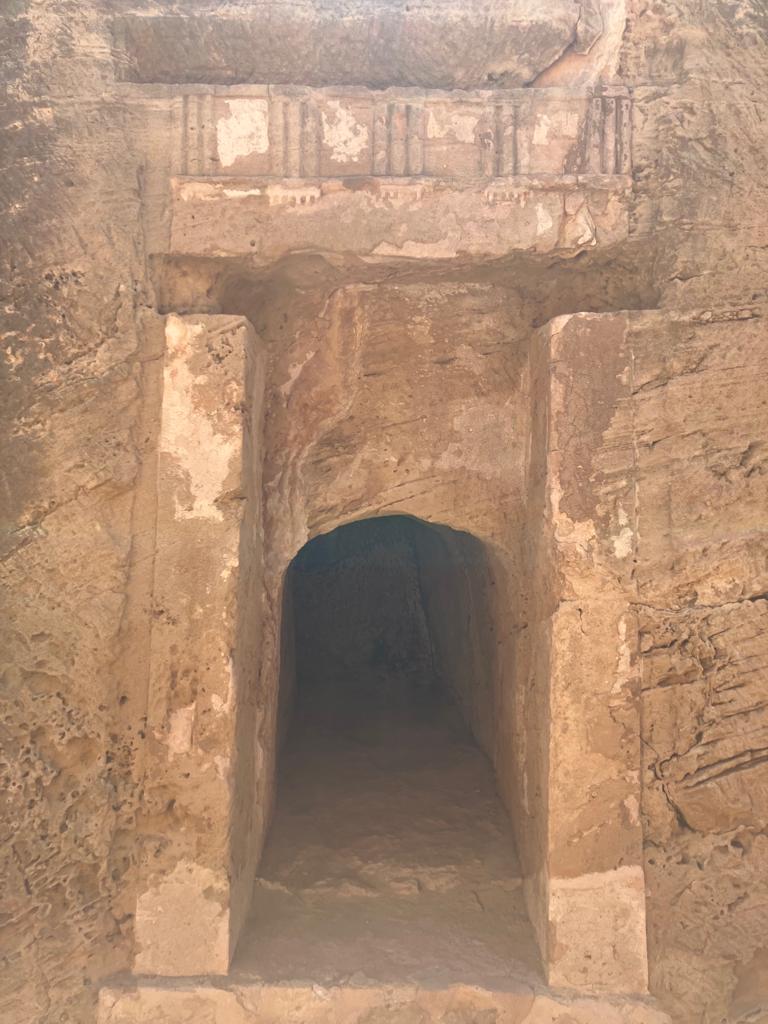
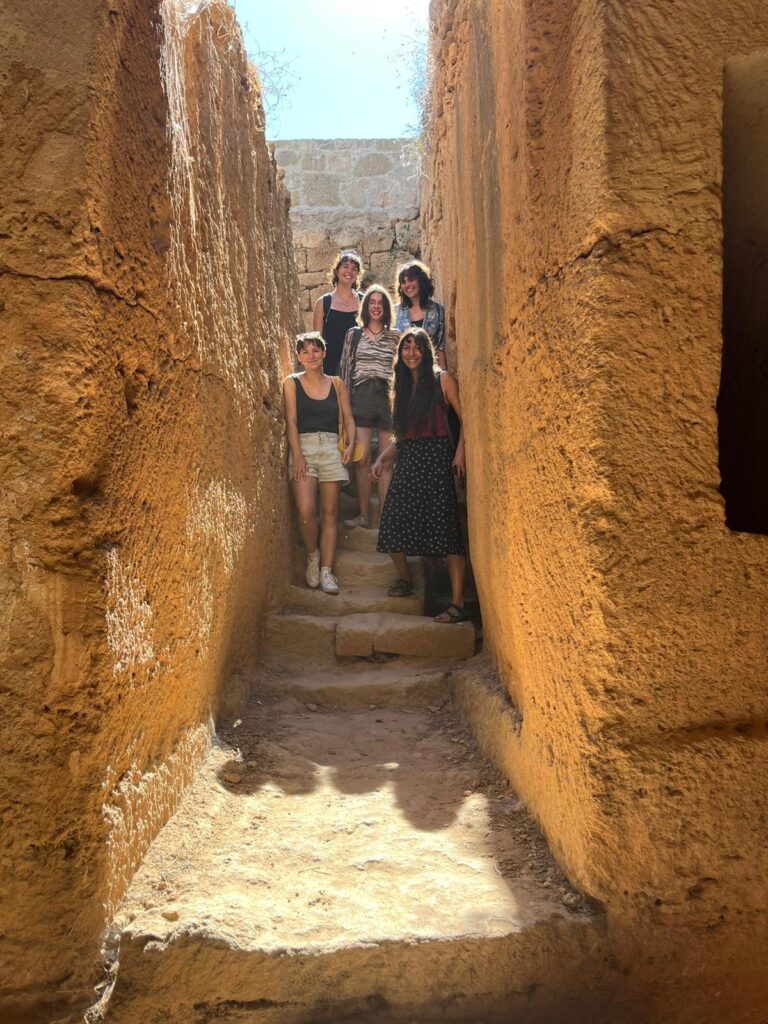
Next up on our tour of the ancient region was Paphos Archaeological Park, a beautiful complex from Nea (New) Paphos, founded at the end of the 4th century BCE by Nicocles, the last king of Paphos. Its excavations across the years have revealed occupations through the middle ages. We traversed impressive Roman villas filled with stunning and intricate mosaics depicting scenes from myth and daily life alike, the Asclepion healing temple dedicated to the demigod healer Asclepius of Greek myth, the sprawling agora and its adjacent Hellenistic theatre, and, finally, the enchanting remains of a Byzantine castle overlooking the sea.
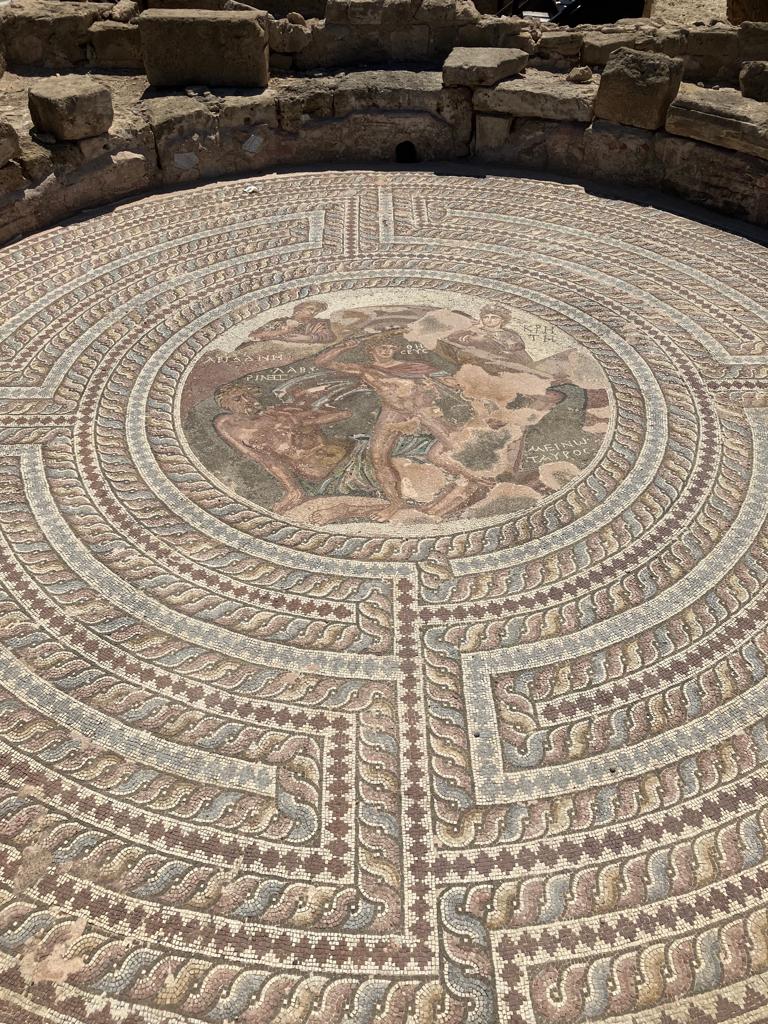
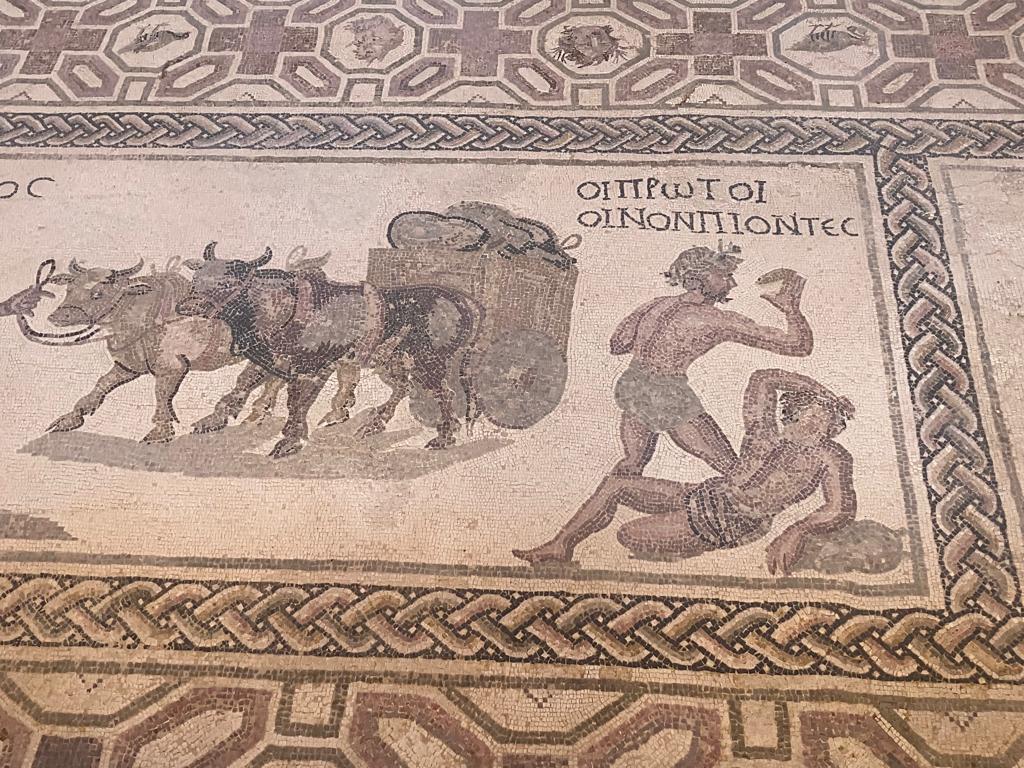
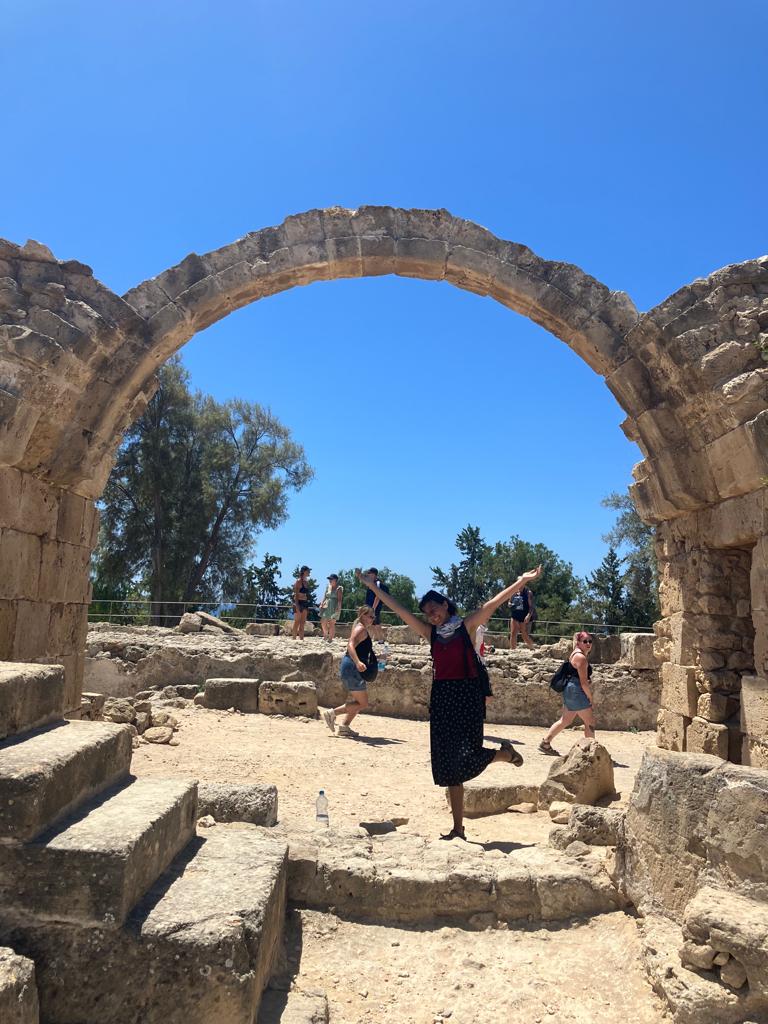
After a serene lunch and stop at the Paphos Archaeological Museum, we ended the day at the Sanctuary of Aphrodite Paphia, center of Aphrodite worship in the ancient Mediterranean situated near the site of her mythic birth. Paphic Aphrodite combined mythologies and attributes of several other goddesses in the eastern Mediterranean: particularly those of Mesopotamian Ishtar and Egyptian Hathor. Her aspects of love and beauty were worshiped, to be sure, but also those of war, wisdom, and fertility. We walked through her aptly gorgeous sanctuary complex to the temple where her representative figure was held: a shining and substantial volcanic rock, her earthly manifestation for thousands of years.
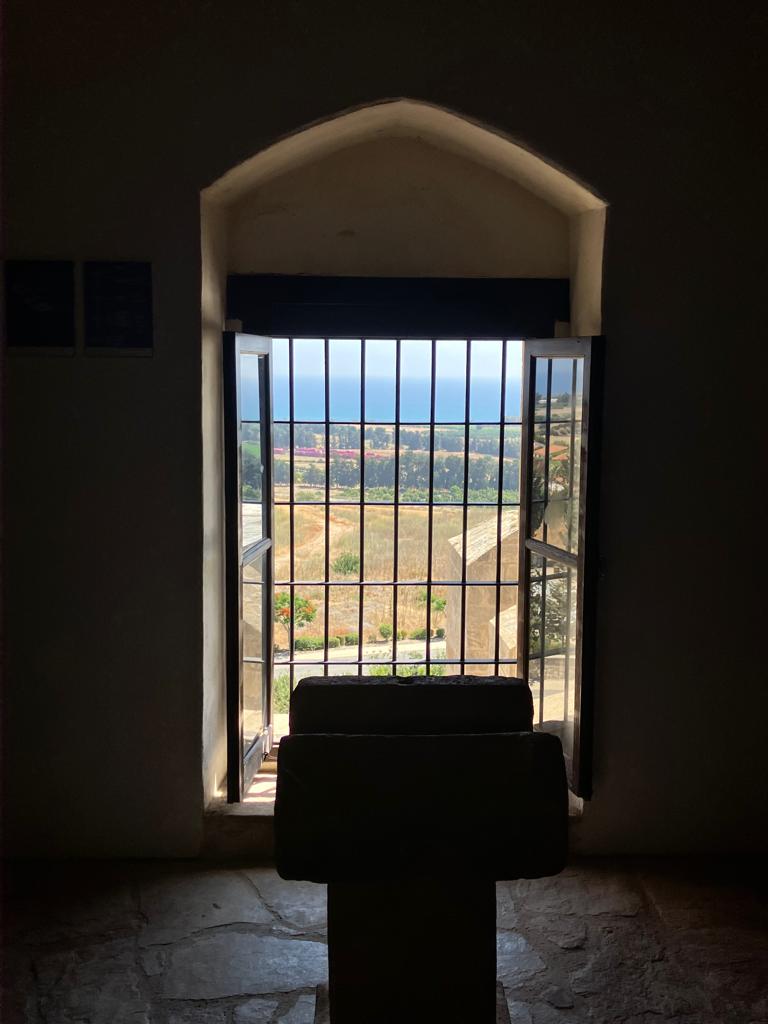
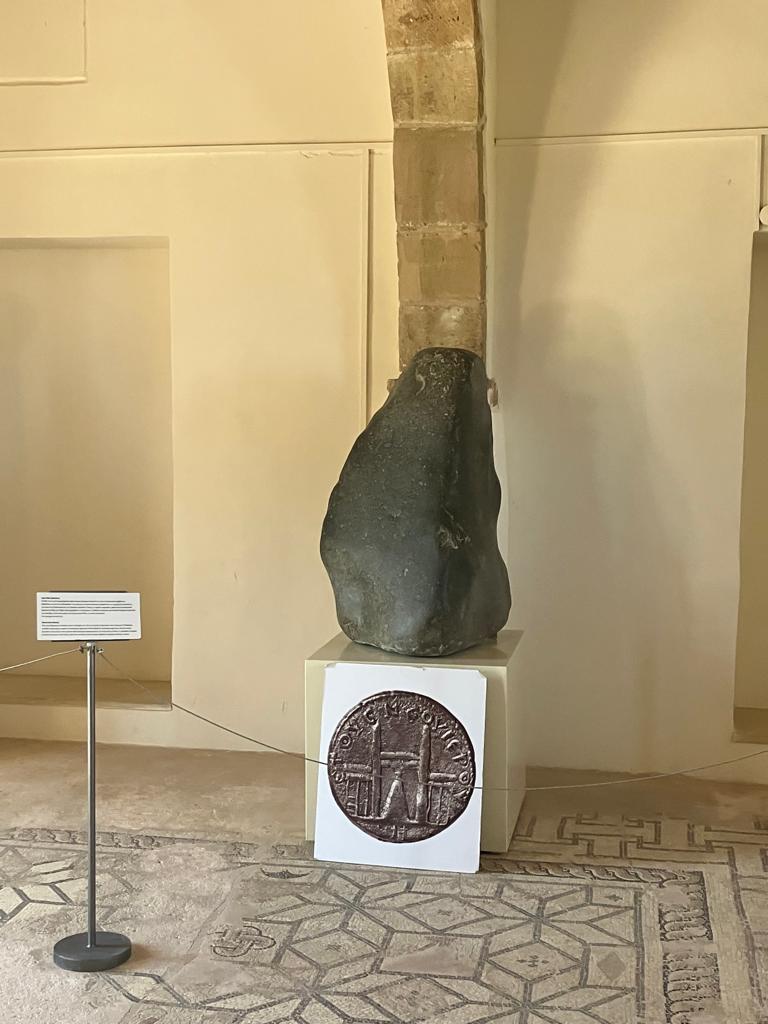
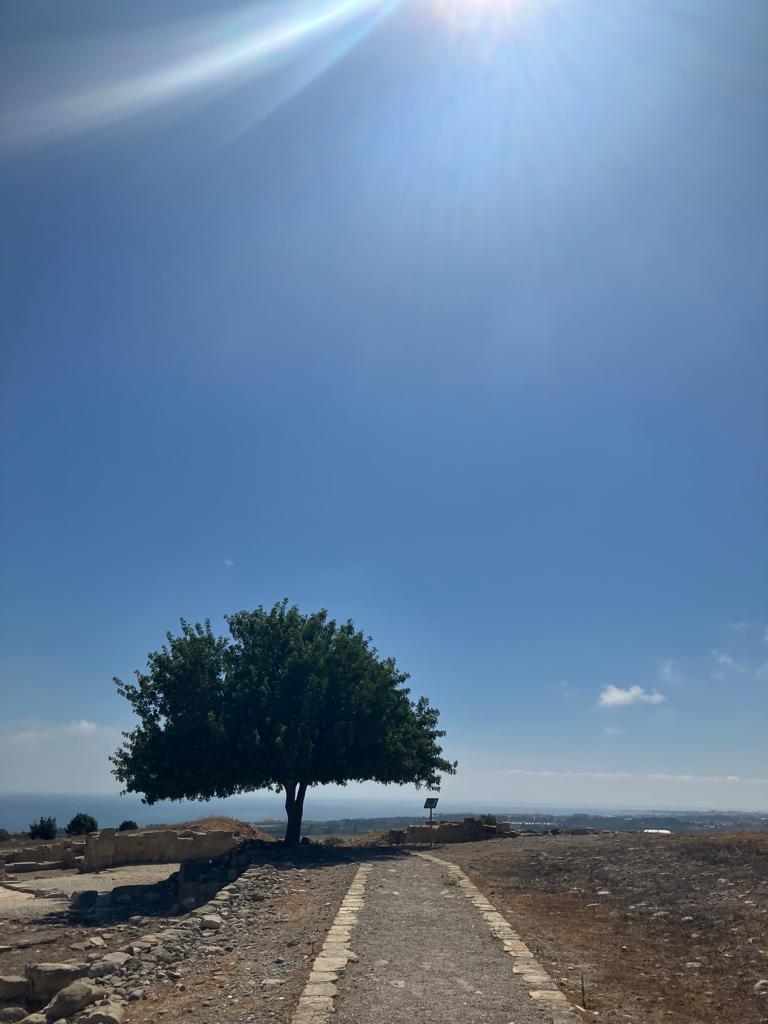
Cyprus being the island of Aphrodite, we naturally could not stop there. On Thursday we set out once again, this time to the Limassol district. We began our day with oodles of bravery as we faced the “death march” up to the Acropolis of Amathus. Despite the early morning climb, this site was my favorite stop. Excavations around the Amathusian ruins have revealed activity and inscriptions from indigenous Cypriots dating from the 1000s BCE, but most of what remains at the site is its religious activity, which begins with the sanctuary to Aphrodite on the Acropolis. The acropolis is centered around two massive, many-ton monolithic vases, originally held in the sacred enclosure of Amathusian Aphrodite from the 6th-7th centuries BCE, but later incorporated into the worship of the Christians who occupied it as a holy site around the 6th-7th centuries CE. Found around the temple complex of the acropolis, overlooking the pillared and fountained agora far below, were Hathor columns, baetyl stones, and the foundations of Graeco-Roman style temple– one of only three such temples found on the entire island (the other two being the temple of Apollo-Hylates near Kourion and the temple of Zeus in Salamis).
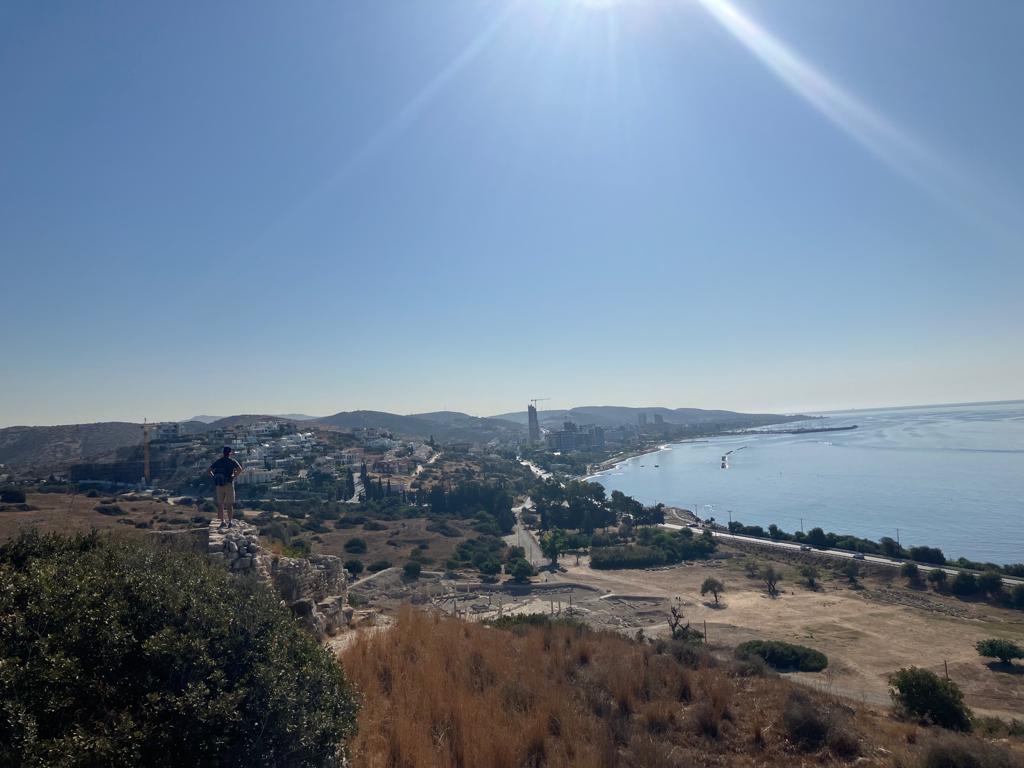
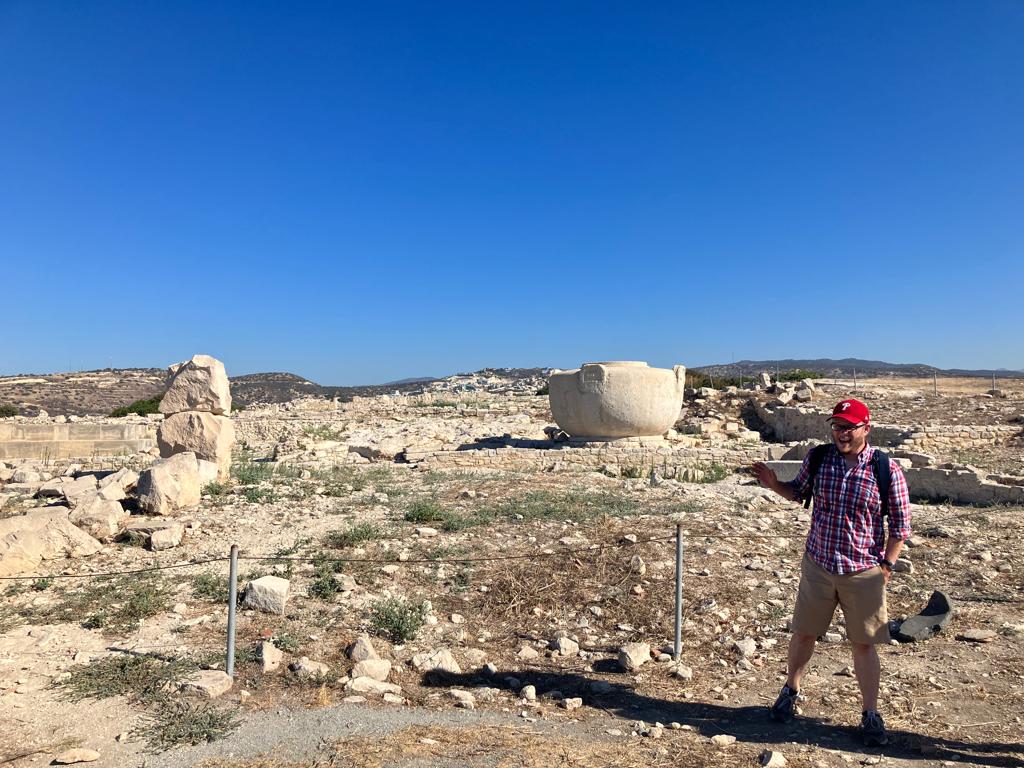
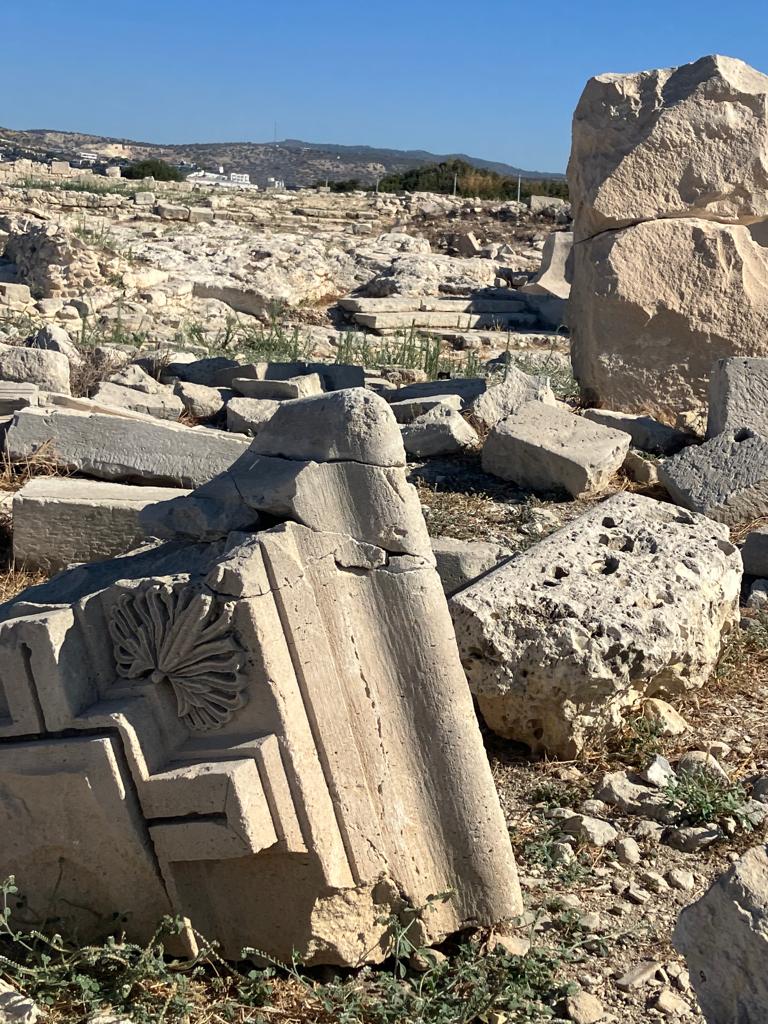
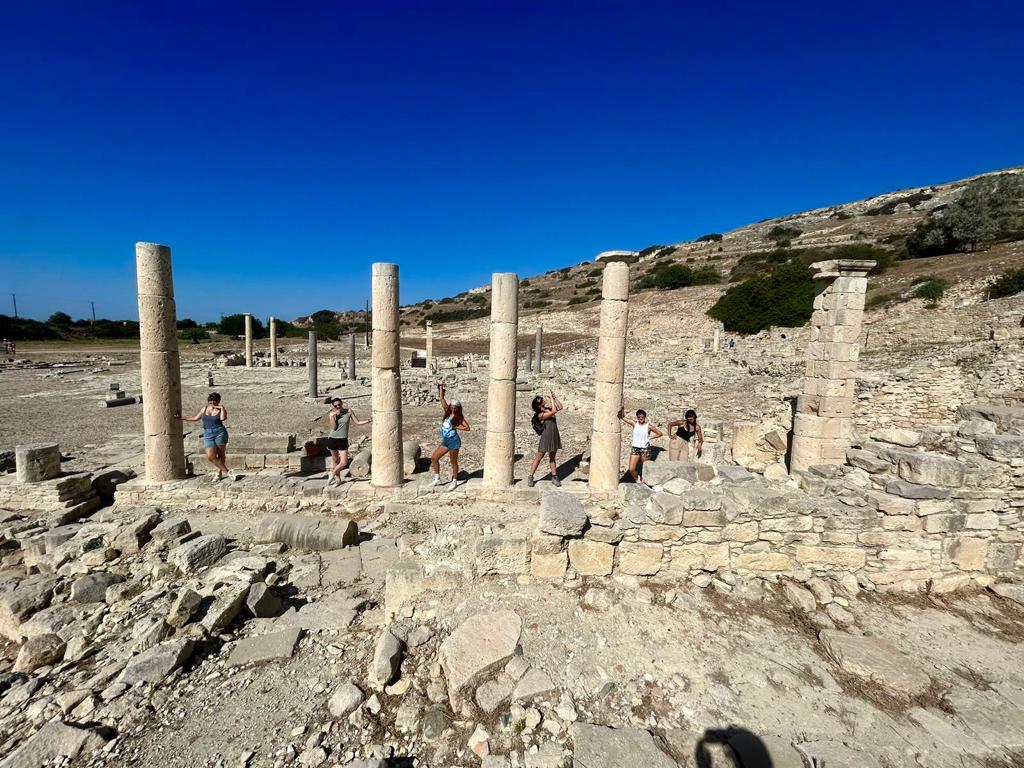
This site was, of course, notable for its archaeological finds, but I found it striking above all as a site of continuous worship over a thousand years, though varied in deity, to the same two stone vases at the center. Perhaps it was placebo, or the emotional effect of being told such information after climbing up a very steep hill at 8:30 in the (already very very hot) morning, but it seemed that you could feel the love and dedication that had been poured into this place over the course of an entire millennia radiating up through the ground, swirling in the air around you, filling our barely-awake bodies (really, I may just be projecting the extent of the exhaustion. But this is my blog post, and I will control the narrative however I please). This is what I find so achingly wonderful about archaeology: the endless reverberating of our humanity throughout time and its decay, knowing so well that natural and tragic impulse for immortality in our short lives and then recovering the objects, the creations, the instantly recognizable marks of our shared human experience from the dirt and the dust. It has struck me a lot during this trip: placing my thumb up to the fingerprint left thousands of years ago on a well-charred piece of cookware after having tirelessly scrubbed off all the dirt and stone that had caked over it during its time in the ground, noticing that we shared the same pattern on our thumbs (a whorl, if you’re interested); uncovering a tiny bead from the mudbrick we had been digging in for hours and imagining how I, too, would have not found it worth my time to try to find and pick back up such a small bead after dropping it on the floor; looking at the more than two thousand year old olive pits my friend just uncovered sitting in their palm, how the person who ate and spit them out would feel knowing we had just scooped up the trash they had clandestinely discarded at the side of the wall, us in our grubby work pants listening to Nicki Minaj over the speaker, different in some ways but always just the same in the essential ones. Anyways. I found it lovely that amidst the thousands of years of people and change, this place was always host to those devoting their worship and their time to their deities of Love. It is hard for love to decay with time.
Next up, we headed over to ancient Kourion, a major city kingdom of ancient Cyprus, situated high on a series of breathtaking seaside cliffs. Though human activity on the site had been around quite a while longer, most of the remains we visited were Roman through early Christian. We were met with even more stunning storytelling murals in the House of Eustolius, an extravagant palace turned communal space filled with mural-decorated baths and chambers. Next to Eustolius’ place was a reconstructed Roman theatre atop the remains of its original, perfectly situated to overlook the sea. It felt especially true to form as set decorators and stage managers ran around, preparing the space for a production of Antigone the following night. We went on to the agora, impressively large and well preserved, various other intricately muraled homes, and finally Earthquake House, whose features and residents (including a single donkey lapping away at its trough in the heat) were locked in time after its collapse during an earthquake in the mid 4th century BCE.
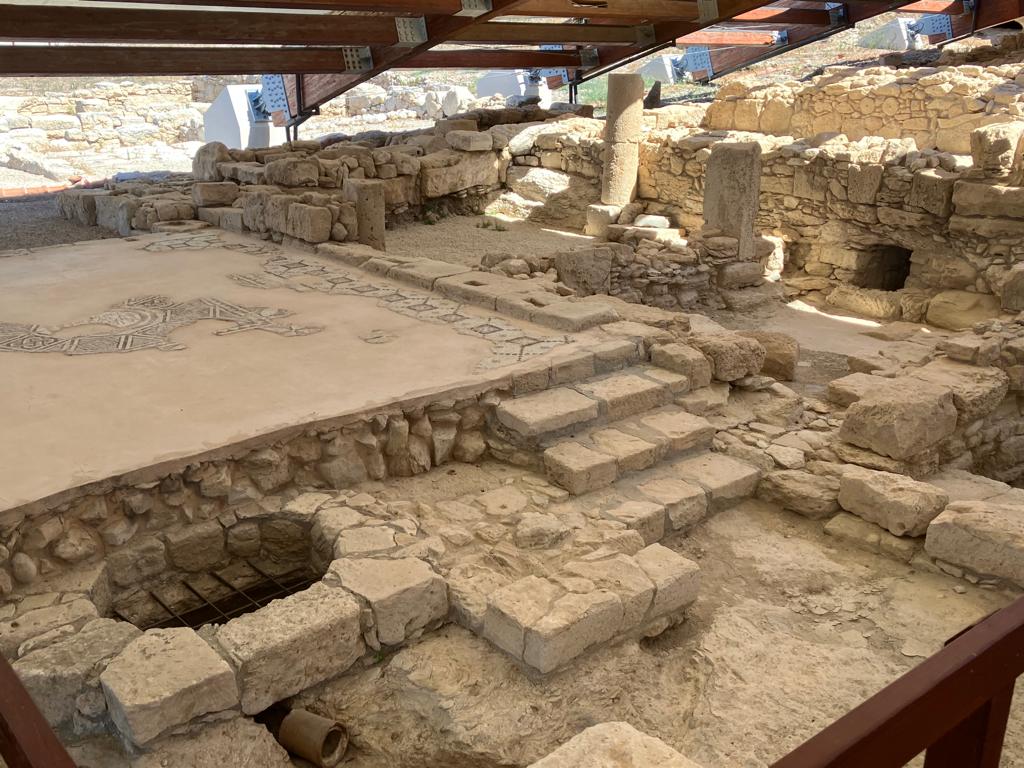
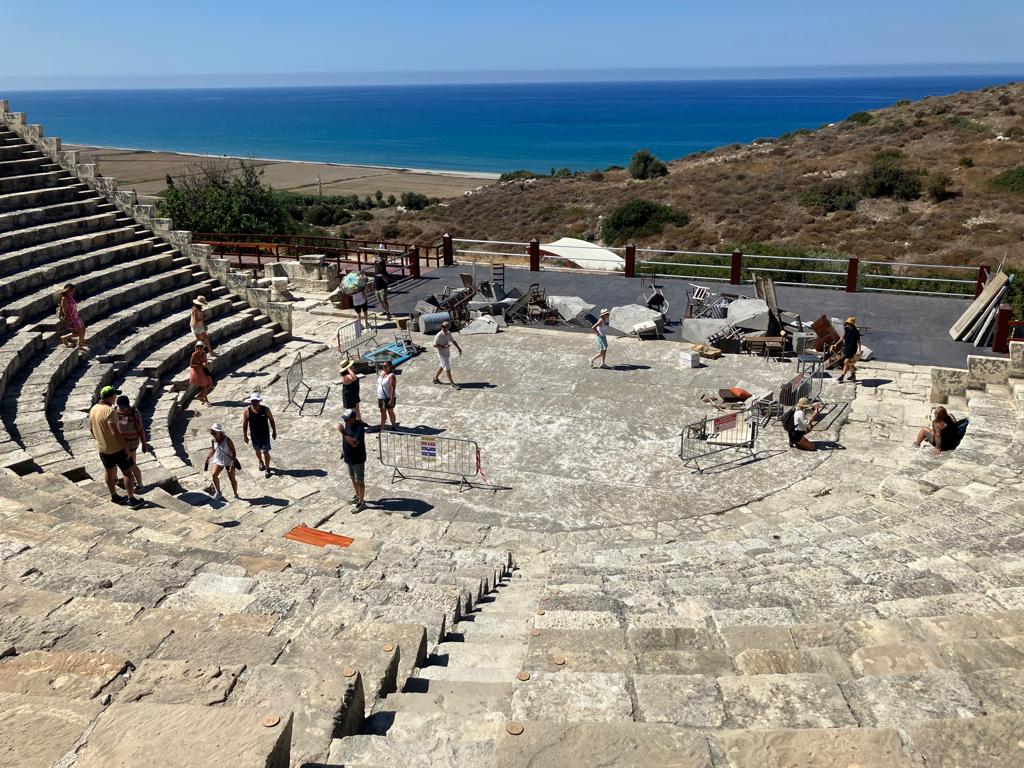
We then made our way to the halls of Kolossi Castle, a 15th century CE French addition to the island that served as a Crusader stronghold and continued its power and prominence across its various foreign occupations. A careful meandering up the darkened spiral staircase takes you up through vaulted rooms, some littered with fireplaces and all with window perches perfectly fit for any contemplative princess worth her salt– our party among them– and ended its steep march at the roof of the castle with its evenly distributed bow and arrow slits and lookout points onto the sea, the settlements, and the mountains surrounding.
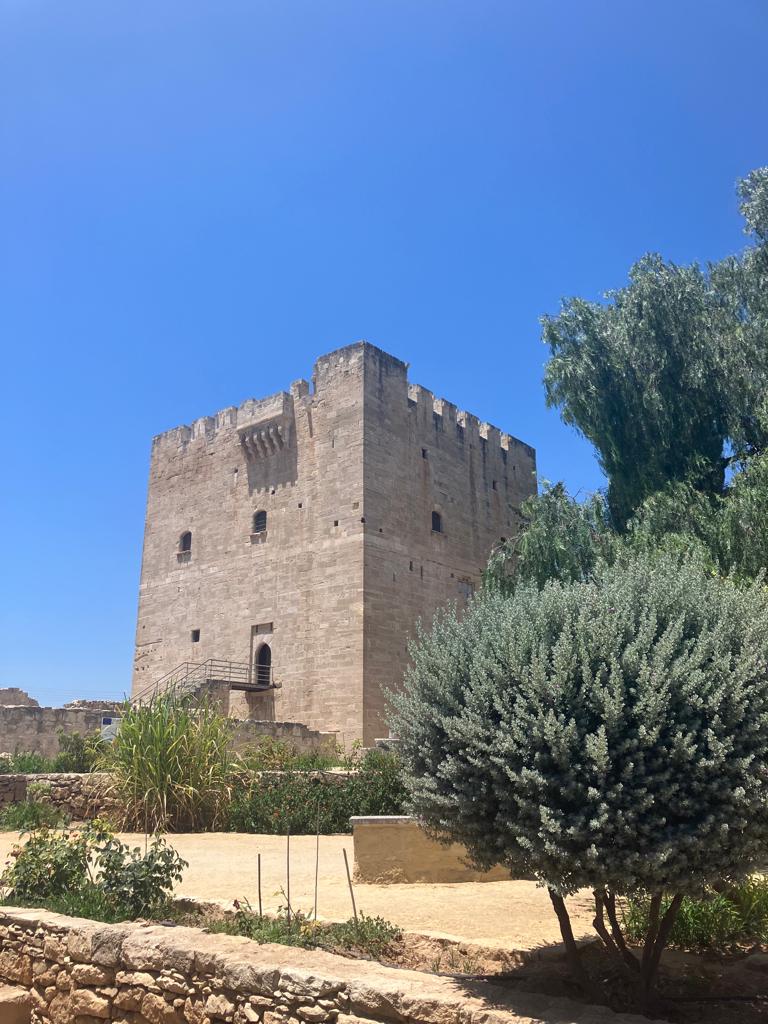
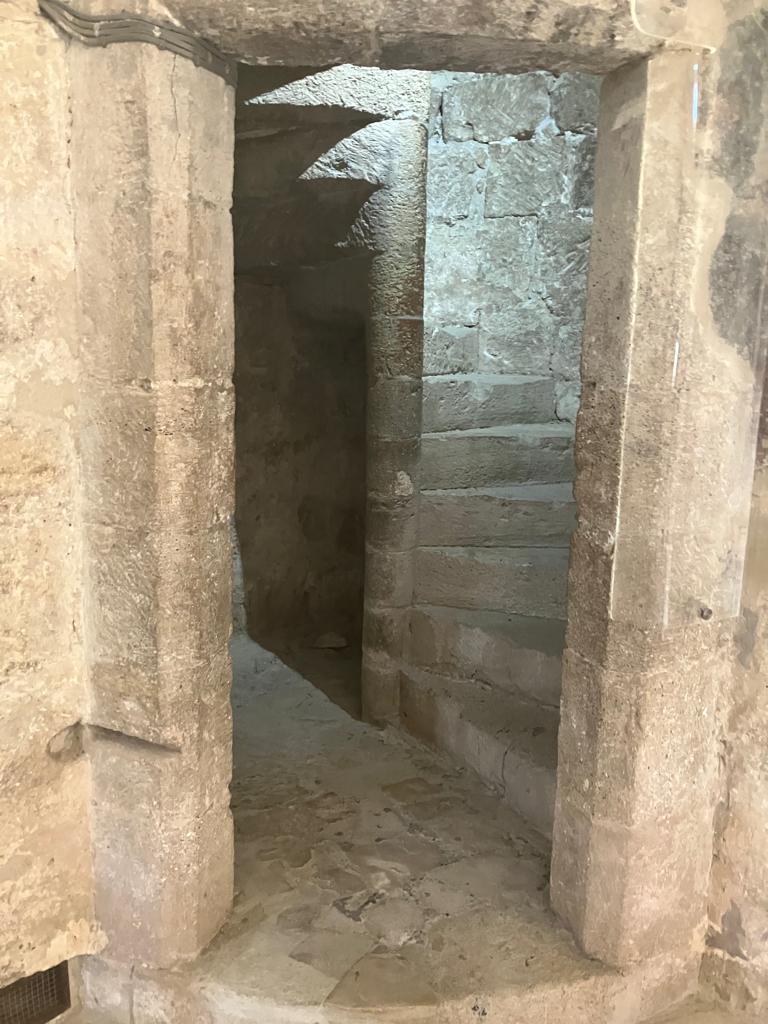
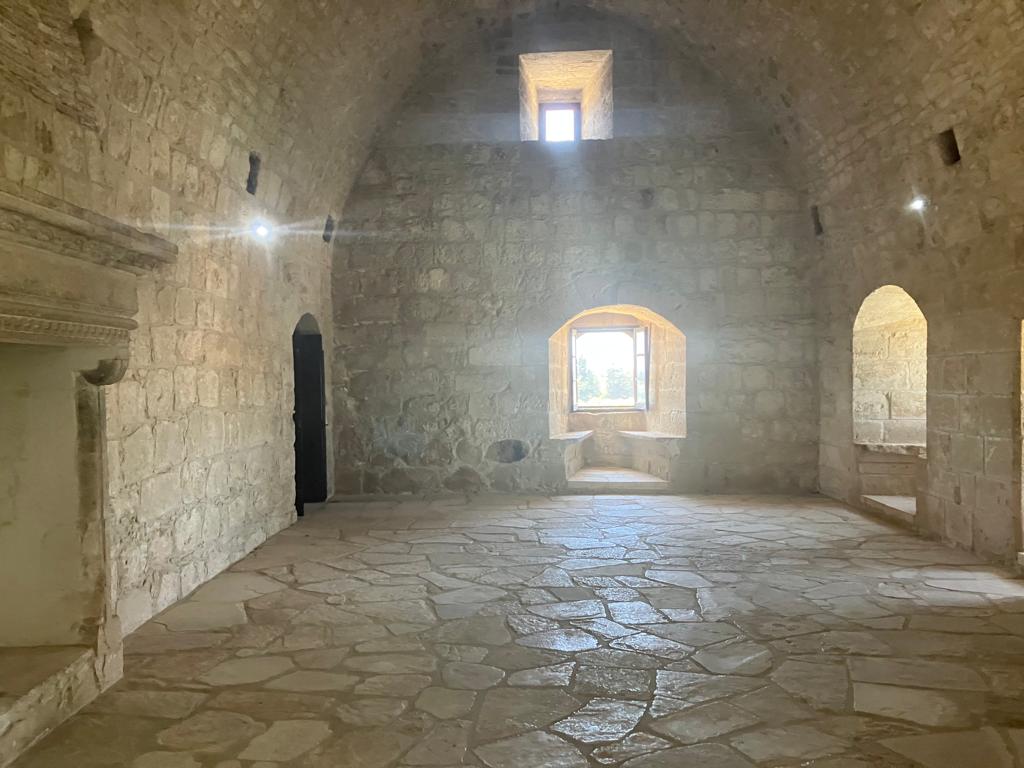
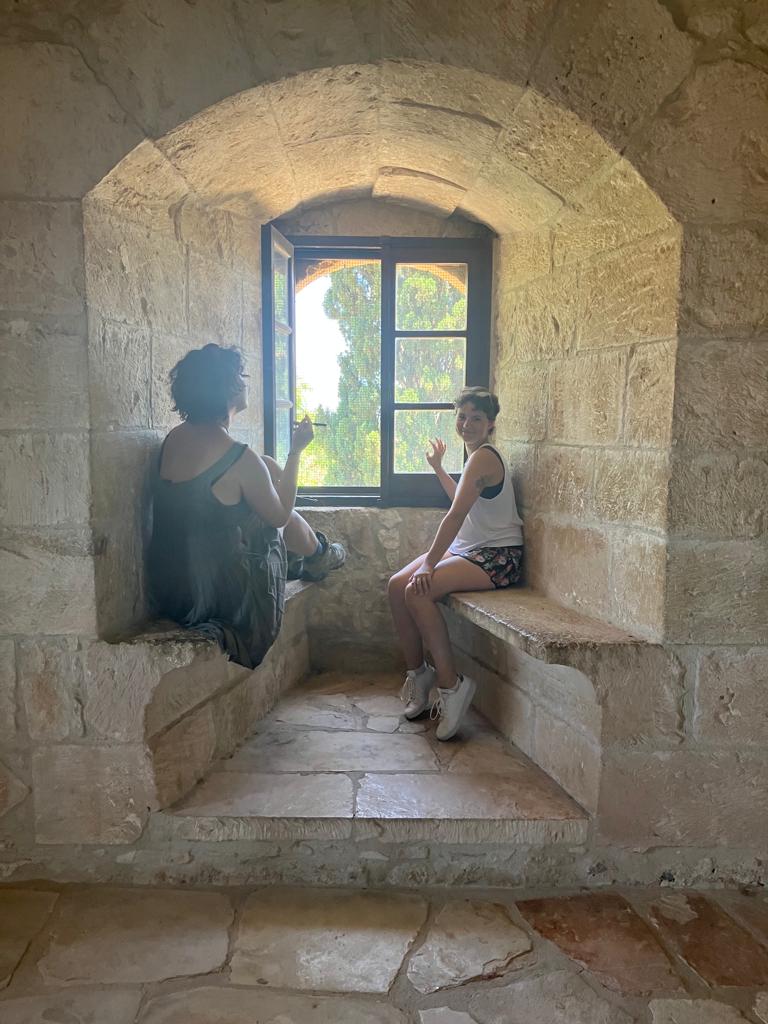
The final stop of our grand heat wave adventure found us at Kalavasos-Tenta, a fascinating neolithic settlement with distinct circular homes and storage rooms of mortar, limestone, and other natural materials found nearby. The circular shape of this settlement was created to optimize wind circulation around its buildings. Its time of activity (~8,000-7,000 BCE) was before any recognizable ceramic production began on the island; for storage, instead, they utilized smaller circular rooms on the outskirts of the premises. Paintings made using natural dyes were found on several walls, featuring several figures and myriad other decorations and designs. Excavations illuminated their cultivation and storage of wild cereal such as barley and wheat, as well as lentils and other legumes, and hunting of pig and wild deer. Fireplaces, work sites, and other community activity spaces were almost exclusively found outside of the living settlement, including their production of worked-stone pieces and jewelry using favored local mineral picrolite.
At the end of our long and beautiful week, we felt very fulfilled and very enriched, if a little tired. We return back to excavation now, never so excited to head back to our dearly loved, sun-beaten trenches in our final week of field school.
